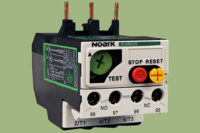Airports scored nearly nine out of 10 on the Suitability Index, followed by health care facilities at nearly seven. While commercial offices are often a target for BSI developers, their suitability for BSI is much lower — just a four on the Suitability ranking, also trailing retail, data centers, and others.
“Modern buildings represent over a century of innovation in systems design. Still, systems such as lighting; heating, ventilation and air conditioning (HVAC); and security often operate in silos,” said Alex Herceg, Lux Research analyst and the lead author of the report titled Spinning the Web: The Case for Building Systems Integration. “Tying them all together can provide increased functionality, simplicity, and cost savings.”
Lux Research rated nine building types on a set of criteria — transactional value, energy density, occupancy fluctuation factor, building systems cost, occupant density, and construction cost — to identify the best bets for BSI. Findings include:
• Airports lead the pack.
Airports earn a high suitability index score — leading the pack by a wide margin — because they combine extreme occupant density (90 persons/1,000 ft.2) with near constant fluctuation (190 percent) and a transactional value of nearly $3,500/ft2/year.
• Data centers’ benefits are driven by energy usage.
Due to server and cooling loads, and 24/7 operation, this class of building has the third-highest energy density of 35kWh/ft2/year. When the associated infrastructure is considered, data centers also have the second-highest transactional value of $1,250/ ft2/year, behind only airports.
• Retail rated more than commercial office.
Commercial offices may be favored but in reality retail presents a better opportunity. High occupant density (15 persons/1,000 ft2) and fluctuation, combined with a transactional cost of $630/ ft.2/year, make retail an attractive prospect for building systems integration.
Publication date: 6/10/2013
Want more HVAC industry news and information? Join The NEWS on Facebook, Twitter, and LinkedIn today!







